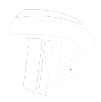The production process of PP(3)
The core equipment of the process is MZCR (multi zone circulation reactor system) reactor R230 system. The reactor consists of riser and downcomer. In the riser, the polymer is blown upward through the reaction gas to form fluidization, which is sent to the upper part of the downcomer to pass through the cyclone separator, and the powder is collected in the downcomer. The reaction gas is circulated by the centrifugal compressor through the external pipeline, and the reaction heat [...]

